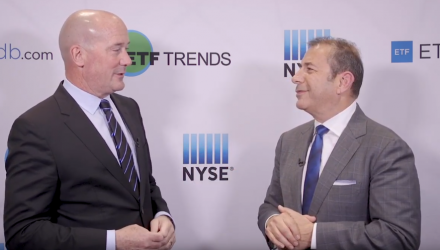Index-based ETFs passively track an underlying benchmark, but that does not mean investors shouldn’t look under the hood and better understand what they are getting themselves into.
“Advisors accept a certain amount of due diligence on active side…. but when it comes to passive investing, it doesn’t matter,” Marc Zeitoun, Head of Strategic Beta, Columbia Threadneedle Investments, said at the Morningstar Investment Conference. “We’re trying to get more people to understand the importance of understanding the rule set behind the indices that they’re invested in.”
For example, smart beta ETFs have grown in popularity, and while these ETF strategies are also passive or index-based products, the underlying indexing methodologies can vary drastically.
As a way to help investors gain a smarter exposure to the fixed-income market and diversify away from the shortcomings of a traditional market cap-weighted bond index, Columbia Threadneedle offers the Columbia Diversified Fixed Income Allocation ETF (NYSEArca: DIAL), which follows an alternative indexing methodology.
The bond ETF tries to reflect the performance of the Beta Advantage Multi-Sector Bond Index, a rules-based multi-sector strategic approach to debt market investing. The underlying smart beta index covers six sectors of the debt market, focusing on yield, quality and liquidity.
By achieving its goal of yield enhancement, DIAL includes multiple sectors throughout the US and around the globe; excludes short term government with limited yield; excludes non-government with limited risk premium; and exclude negative yielding bonds.
The ETF’s quality management aims to avoid the “tails of the market” by removing sectors that offer no risk premium and lower quality tiers that have outsized downside risk, which essentially means no corporates rated below single-B ratings, no sovereigns rated below double-B ratings and no corporates longer than 15 year maturity.
Additionally, the fund keeps in mind liquidity limitations or focuses on issues with sufficient tradability to provide investors with liquidity, managed against volatility. The index screens for larger issue size, screens for recently issued securities and limits number of bonds per issuer.
Watch the full interview between ETF Trends CEO Tom Lydon and Marc Zeitoun:
For more ETF-related commentary from Tom Lydon and other industry experts, visit our video category.
